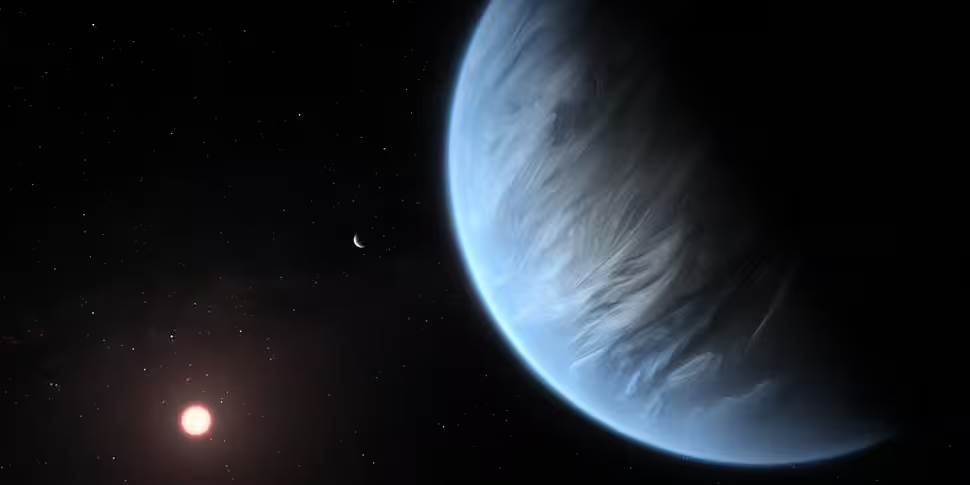Water vapour has been found in the atmosphere of a planet within a habitable zone for the first time.
Data from the ESA/NASA Hubble Space Telescope made the discovery on K2-18b.
The planet is eight times the mass of Earth.
It is now the only planet orbiting a star outside the Solar System, or 'exoplanet', known to have both water and temperatures that could support life.
Dr Angelos Tsiaras is from University College London.
He said: "Finding water on a potentially habitable world other than Earth is incredibly exciting.
"K2-18b is not 'Earth 2.0' as it is significantly heavier and has a different atmospheric composition.
"However, it brings us closer to answering the fundamental question: Is the Earth unique?".
The University College London researchers used archive data from 2016 and 2017 captured by the Hubble Space Telescope and developed open-source algorithms to analyse the starlight filtered through K2-18b's atmosphere.
The results revealed the molecular signature of water vapour, also indicating the presence of hydrogen and helium in the planet's atmosphere.
The authors believe that other molecules, including nitrogen and methane, may be present - but they remain undetectable with current observations.
"Further studies are required to estimate cloud coverage and the percentage of atmospheric water present", they said.
The planet orbits the cool dwarf star K2-18, which is 110 light years from Earth in the constellation Leo.
Given the high level of activity of its red dwarf star, K2-18b may be more hostile than Earth and is likely to be exposed to more radiation.
K2-18b was discovered in 2015 and is one of hundreds of 'super-Earths': planets with masses between those of Earth and Neptune.
Co-author Dr Ingo Waldmann said: "With so many new super-Earths expected to be found over the next couple of decades, it is likely that this is the first discovery of many potentially habitable planets.
"This is not only because super-Earths like K2-18b are the most common planets in our Milky Way, but also because red dwarfs - stars smaller than our Sun - are the most common stars."
The Hubble Space Telescope is a project of international cooperation between the European Space Agency (ESA) and NASA.









